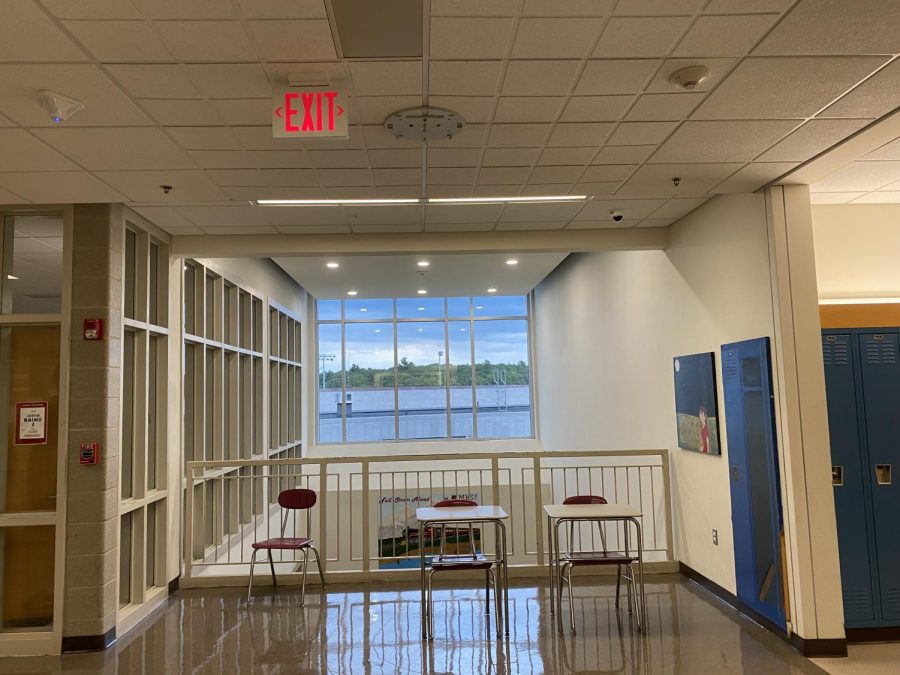Students Reflect on Return to Full-Capacity, In-Person Learning
Relationships, Will to Learn Are Stronger
October 6, 2021
About a month into the 2021 school year, RMHS students reflected on the past year and a half of COVID-disrupted learning and explained what parts of the learning models used over the last eighteen months helped them learn best.
Beginning in March 2020, students in Reading and across the world were thrown into a learning environment unlike anything they had ever seen before. For about a year they dealt with complete virtual learning utilizing online technologies such as Zoom, Microsoft Teams, and Google Classroom to try to bring learning to their living rooms. Following that, a few months of hybrid, socially distant learning with longer and fewer lessons per day was implemented. September of this year was the first time students had normal school, with the exception of masks, in nearly 18 months.
Having had a month to fall back into the routine of normal, in-person school, many students were reminded of the relationships they had missed with teachers last year. “That connection you make with your teacher is crucial to understanding the material. Being comfortable to go ask them questions and the relationships you form with them will drive your learning that school year. So I think online school was hard because we only got to meet our teachers at the beginning of school for like–what?–10 minutes each? And you can’t form a connection in 10 minutes,” Senior Madaket Rzepka explained. “Like this year I have Mr. Skehan for two blocks and on some days it’s like 2 blocks in a row, so Mr. Skehan and I already have more of a relationship than I had with some of my teachers halfway through the year last year.”
At the beginning of the last school year, students were only given a few minutes to meet and greet with their teachers during a FLEX block one morning. Many people felt uncomfortable asking teachers for help over Zoom calls as well because there wasn’t an easy space to talk to the teacher individually. It didn’t get much better when they were allowed to come into class but had to ask teachers questions from 6 feet away.
In addition to the benefit of relationships with teachers, students noted that the will to learn is more present when they are inside a classroom. Senior Maddie Egan described, “Obviously with COVID it was definitely harder, you know, procrastination wise, just the work ethic really wasn’t there, and I am happy being back in person and really getting that back and my old study habits. I think definitely it’s easier to learn in person so I do like being back a lot.”
Their new work ethic this year did not go unchallenged, however. The most common complaint about the return to the normal schedule this year was the dramatically increased amount of homework provided by teachers. Egan further described, “We definitely get more homework when we have the 6 classes. I sort of get the same amount of assignments or the same time length of assignments but obviously there’s more when we have more classes in a day. And I do miss the 4. I could just take a night off from homework if I really needed to.”
While there are positives and negatives to both styles of learning, students seem to be overwhelmingly in support of the normal school model like they had the 2019 school year and the years prior. They are continuing to adjust to the change with hope of a combination of 2020 and 2021 learning that best satisfies their academic needs.
